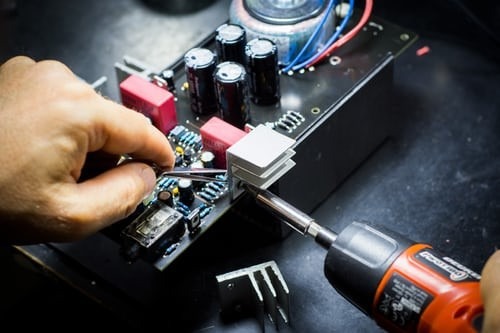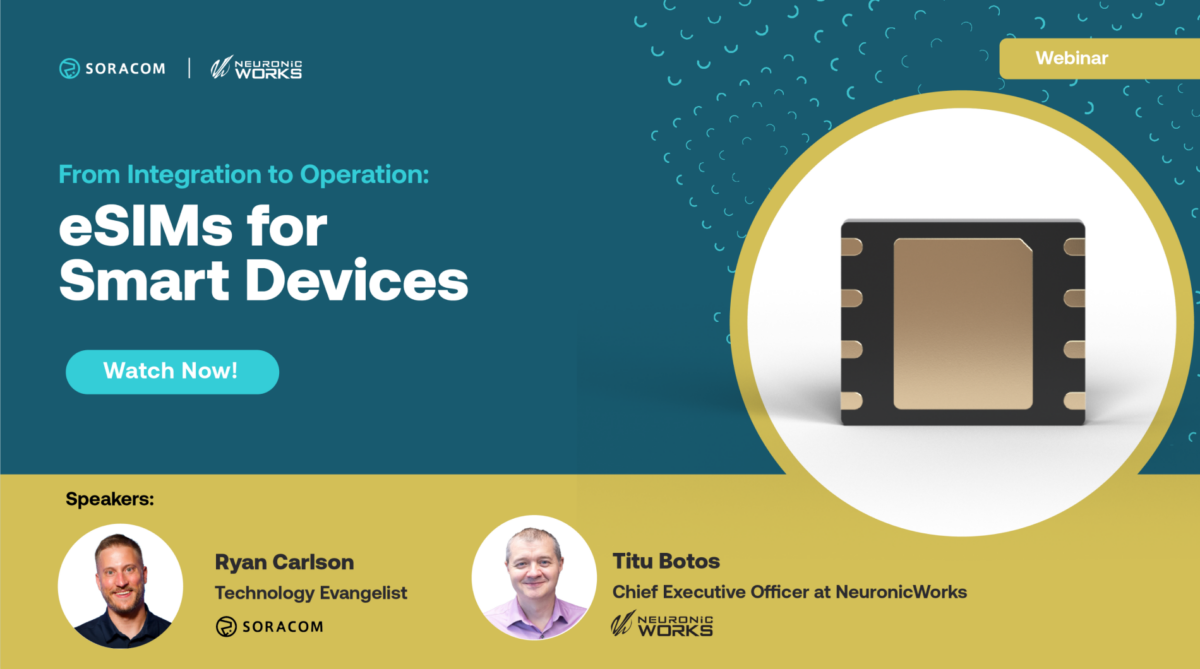5 Reasons to Use an IoT eSIM

Since the first GSM phone launched back in 1992, cellular connectivity has relied on SIM technology to properly function. However, with the launch of eSIM technology, more developers are choosing to invest in embedded SIM cards — which are built right into the device at the point of manufacturing — rather than legacy SIM cards.
In fact, tech giants like Google, Apple and Samsung are some of the first smartphone and wearable manufacturers to deploy eSIM technology into their flagship products such as the Google Pixel 2, iPhone X and the Samsung Gear S2 and S3 watch.
eSIM technology will benefit the cellular IoT industry more than any other, however, providing incredible value to manufacturers and end users alike.
Here are 5 reasons why your business should use an IoT eSIM.
IoT eSIM Provides…Operational Flexibility
If you’ve ever switched network carriers for your smartphone in the past, you know that it takes a week or so for the SIM card to arrive before you can officially start using your phone. This is frustrating enough for a single smartphone, but imagine if you had to make a similar transition for a fleet of 10,000 cellular-connected IoT devices.
It could bring data collection to a halt or — in cases where you need to switch carriers due to scaling — it could result in roaming data costs while you wait for the SIM cards to arrive. Plus, manually switching each SIM card out of its tray for the new version takes time and money that could be better spent on other aspects of the business.
With IoT eSIM technology, users can switch to any other network carrier remotely in real time. Plus, you can even store multiple profiles on a single device, allowing you to swap in between networks depending on factors such as roaming, pricing or even external factors that are affecting a certain carrier.
Enhanced Scalability
When it comes to entering new markets, timing needs to be impeccable. It can be a daunting endeavor for any business but it’s often a necessary one.
For instance, imagine trying to deploy one thousand cellular-connected IoT devices in a new country. This would be a logistical nightmare that involves signing new contracts and swapping out hundreds of SIM cards — hoping that you don’t forget a few.
All of these factors can delay your go-to-market plan, allowing your competitors to build their presence in your new turf while you’re ramping up your IoT devices. Again, IoT eSIM technology can ease the burden by allowing businesses to remotely connect all of their cellular devices to a mobile network of their choosing. Plus, if you wish to expand your IoT business to another country, you can program the transition remotely so that your devices are connected with a local operator in that specific area, saving you on roaming costs and unnecessary physical swapping.
Improved Design
Across the board, devices are continuing to shrink in size as technology evolves, allowing manufacturers to build products that are lightweight, or supercharge their devices with more battery life, processing power or available memory.
In the case of IoT devices, eSIM technology has eliminated the need for a SIM card tray. Without this dead weight, businesses can effectively cut manufacturing costs while also providing end users with an improved product.
This is particularly useful for cellular IoT wearables and cellular IoT medical devices, where weight can play an important role in the feasibility and attractiveness of the product. In addition, hardware that previously wouldn’t fit within the confines of a certain IoT device may now have a chance to be implemented, providing new functionalities and capabilities that can set your product apart from competitors that are still using physical SIM cards.
Upgraded Security
Cellular IoT devices deal in data. Often times, it’s sensitive information that businesses don’t want others to be able to easily access. While physical SIM cards were the ultimate network authentication for cellular-connected devices in the past, there’s nothing stopping individuals from simply removing the SIM card from the device and placing it into their own.
From there, they have the keys to your device and can essentially access your data and potentially rack up your costs. Worst of all, without any IoT remote access capabilities to your devices, you wouldn’t know until you’re being asked to foot the bill.
It’s virtually impossible to take an eSIM out of an IoT device as it’s embedded during manufacturing. This ensures that the gateway to your device and to its network remains protected throughout. Plus, if the device itself is stolen or tampered with in any way, having an eSIM will enable you to track the IoT device with ease.
Built to Last
Cellular-connected devices that are still using SIM technology require a device tray that the chip can be inserted within. While this has worked for decades, it requires there to be a hole in the device where dust and water could potentially enter, causing irreparable damage.
In fact, eSIM technology enables manufacturers to build completely waterproof IoT devices. This can open the door to new opportunities in IoT water monitoring, flood prediction and other use cases, while providing end users with a product that is far more durable.
Choose the Best IoT eSIM for Your Project
When it comes to optimizing your IoT project, why stop at investing in eSIM technology?
Soracom provides small businesses and enterprises around the world with intelligent IoT cellular connectivity that empowers their devices. Together with Truphone, we are helping projects reap the benefits of IoT eSIM technology by remotely provisioning SIM profiles over the air to M2M, IoT and consumer devices, simplifying the scaling and management of cellular-connected IoT fleets.
Plus, we’ve built a variety of different cloud-based tools and resources, including IoT remote access capabilities, IoT encryption offloading, IoT data and protocol management, and more.
Contact us today to learn more about Soracom cloud connectivity and our intuitive device management platform.





